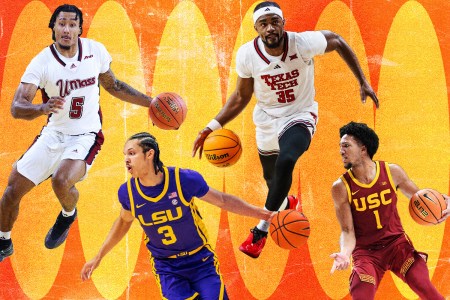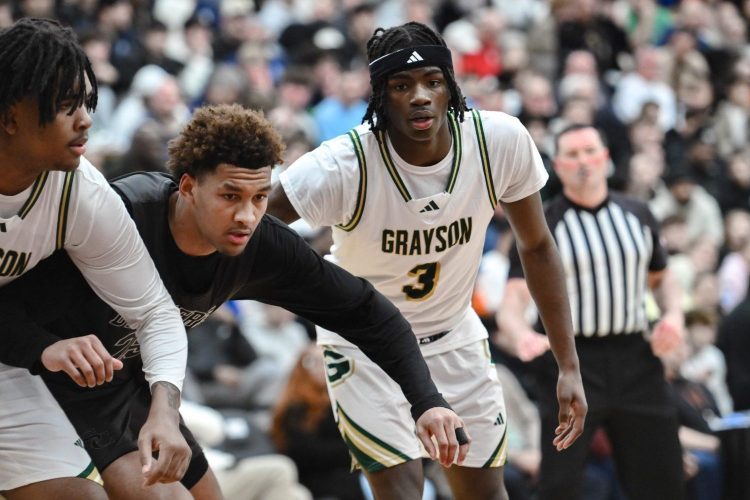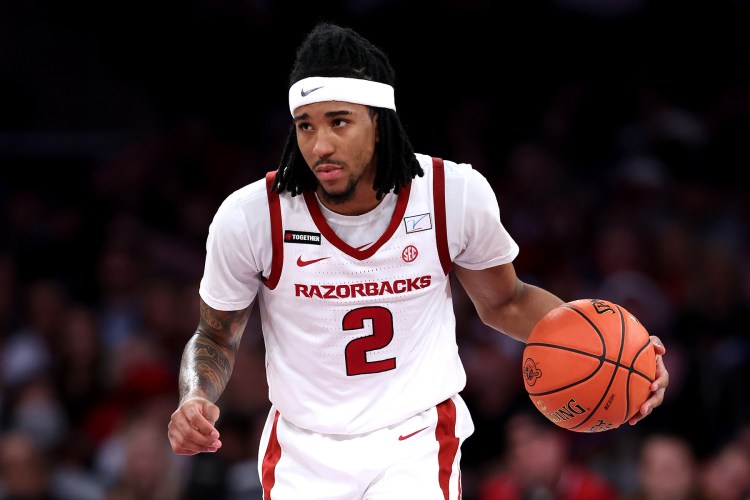CHICAGO – The NBA Draft process is different for every team. Scouts and executives spend the season traveling around the world watching players, gathering intel and crunching numbers. The NBA Draft Combine, which was held over four days last week in Chicago, was the first time teams got to sit down with players in one-on-one meetings and see how some mid-major players compete against better competition.
“Each year we see a couple players jump up boards and really help their draft stock,” one NBA scout told Hoops HQ. “There’s always at least one player that can make themselves millions of dollars with how well they play here or the lasting impression they leave on the court or in meetings.”
The combine was a Buzz Machine, generating intel not just on the players but also the teams that have to make decisions on where (and whether) to draft them. Here are the most intriguing questions coming out of the combine:
What Are the Chances the Mavs Make A Big Trade (Again)?
Let’s just say it’s less than 1.8 percent, which was the chance Dallas had of winning the NBA Draft lottery.
It’s an understandable question in the wake of the team’s shocking trade of Luka Doncic to the Lakers. General Manager Nico Harrison said the night of the lottery that he plans to keep the pick and draft Cooper Flagg, even with Giannis Antetokounmpo stating he would be interested in talking to other teams. Sources within the Mavericks organization confirmed to Hoops HQ, “We are 100 percent drafting Cooper Flagg. There will be no trades for our pick on draft night.”
What Will the Spurs Do With the No. 2 Pick?
Things are more interesting with respect to San Antonio, which owns the No. 2 pick — for now. Rutgers freshman point guard Dylan Harper is the consensus second-best available prospect, but he would be going into a guard-heavy situation with De’Aaron Fox, Stephon Castle and Chris Paul already on San Antonio’s roster. General Manager Brian Wright could entertain trade talks that would allow him to move down or go after a superstar to pair alongside Victor Wembanyama. The Spurs could also take a swing on Harper and find a way for him to co-exist with multiple lead guards. Harper has good size at 6-foot-6 and there were times he played off the ball at Rutgers this past season, so it’s very possible that could work.
Who Won the Combine?
The biggest riser coming out of the combine is Stanford forward Maxime Raynaud. Raynaud was the best player during the scrimmages, finishing with 20 points, 9 rebounds and 3 assists in the first game and shutting it down and not playing in day 2. The 7-foot-1 senior is originally from Paris and tested the NBA waters last year. He came back and looked like a completely different player his final year at Stanford.
Raynaud is a prototypical pick-and-pop threat at the NBA level. He connected on 34.7 percent from three-point range on five attempts per game last season. “He’s a guy that could shoot into the lottery,” one NBA scout said while watching him in the scrimmage.
Raynaud was right when he said his biggest asset is his versatility. He is a 7-footer who can shoot and also play on the block in mismatch situations. After being a projected fringe first rounder all season long, Raynaud has jumped up boards after a consistent showing in Chicago last week.
Who Else Helped His Stock?
BYU freshman point guard Egor Demin had an up-and-down season for head coach Kevin Young, but he generated a lot of buzz at the combine. He measured at 6-foot-8 ¼ and showed the court vision and passing ability he demonstrated all season.
The NBA spacing will allow Denim more room to maneuver. He did not play in the scrimmages in Chicago, but he had an impressive pro day, showing increased explosiveness off the dribble and an improved three-point jumper.
The Utah Jazz have the fifth overall pick and every decision maker in the organization had ample time to watch Demin at practice and at games taking place just 45 minutes from their offices in Salt Lake City. Demin has been a projected late lottery pick to mid-first round all season, but his strong showing at the combine could propel him into the top of the lottery.

How High Did VJ Edgecombe Rise?
We’re not just talking about the draft, though Edgecombe will certainly be picked near the very top. We’re also talking about the vertical leap measurements which took place in Chicago.
Every player at the combine was required to go through measurements, run through agility drills and participate in the various shooting exercises on the first day. The very first group that hit the court were the seven players projected at the top of the draft: Cooper Flagg, Dylan Harper, Ace Bailey, VJ Edgecombe, Tre Johnson, Khaman Maluach and Derik Queen.
Edgecombe was the first to perform at the vertical station and as expected, he floated in the air. In the background in the quiet Wintrust Arena, Bailey could be heard yelling, “Get up VJ!” The 6-foot-5 guard out of Baylor recorded a max vertical jump of 38.5 inches, the third highest of the combine.
“I was nervous just out there being the first to jump,” Edgecombe told Hoops HQ. “But, you know, I set the tone for the rest of the group and got the day going and our whole group, we all just supported each other throughout the entire session. Those are my guys. We’ve been playing with and against one another forever so to go through this process together was special.”
Who Else Measured Up (Or Didn’t)?
There were some question marks from the first group. Maluach’s footspeed got the best of him in the pro lane drill where he had to restart and go through it six different times due to hitting the cones on the corner.
The biggest surprise was Queen’s shooting mechanics. His shot looks altered from the season and a bit more like a hitch or slingshot. He takes a while to gather and get in his shooting pocket and it doesn’t look fluid. One of the coaches at his basket was even trying to give him some last minute tips before he started his drills.
Johnson, the star freshman out of Texas, shot lights out during the shooting drills, collectively connecting on 68 percent on all his shots, but he still left the court shaking his head. “We ran through all the drills the night before and I did way better so of course I was disappointed shooting in front of all the scouts and everyone there,” Johnson said.
Each player was measured on height (without shoes), weight, standing reach and wingspan. The biggest surprise came from Bailey only measuring at 6-foot-7 ½ when he was listed at 6-foot-10 all season long at Rutgers. Michigan State freshman Jase Richardson was listed at 6-foot-3 during the season and measured at just 6-foot ½. He did record a 6-foot-6 wingspan, which is what made him such an effective perimeter defender this year.
Will those numbers affect either player’s draft stock? Unlikely for Bailey, but Richardson could fall just a little bit in the first round since teams see him more as a combo guard. The size difference on the wing from college to the pros is substantial.
What Big-Name Freshmen Are Staying in the Draft?
Arizona’s Carter Bryant and North Carolina’s Drake Powell said they were definitely staying in the draft last week despite mediocre freshmen seasons. Bryant passes the eye test with great size and length at 6-foot-8 and a promising jumper that extends past the three-point line. The feedback from around the league is that he interviewed very well over the course of three days and is a player teams feel like they can bring in and mold under their coaching staff and system and build off the tools he already has. Bryant only averaged 6.5 points and 4.1 rebounds in 19.3 minutes at Arizona.
Powell is another player a team might take a swing on in the back half of the first round. His athleticism is off the charts and what he showed as a defender in high school still sticks with scouts even after his quiet year at North Carolina. Each year we see players picked on potential and upside alone. Carter and Powell could be those two prospects this year.











